1. Your 'Down to Earth' project focuses on the rich qualities of Nijmegen clay. How did you approach the exploration of this material, and how did its characteristics influence the overall design process for the water jugs?
The topic of Nijmegen clay was brought to us by Fabrikaat, a cultural platform based in the same city. They had already started exploring the clay found in and around Nijmegen and had run some initial tests on about 18 areas. When they launched an open call, we submitted two proposals, one with a focus on the colour variations of these local clays.
Our approach was to carry out a broad colour research using various clays from the area. We took a semi-scientific approach: everything was documented carefully, and we tested the same clays at multiple firing temperatures. Alongside researching the natural colours of the clay bodies, we also explored terra sigillata, a Roman technique we came across thanks to the Roman heritage of Nijmegen and an on-site workshop.
As we processed different liquid clays ourselves—from digging to mixing, filtering, refining—we noticed not only colour differences, but also major behaviour variations when firing. Some clays melted at lower temperatures, others were more flexible, or shrank significantly more during firing. A few even lost their shape entirely if fired too hot.
This made working with 100% Nijmegen clay quite tricky: it wasn’t always stable, so we sometimes had to blend it with other clays to get larger usable shapes. In the end, we chose to focus on two specific Nijmegen clays, along with the terra sigillata we were able to extract from them.
The water jug shapes were influenced by three main points: the Roman aesthetics we wanted to keep, the firing temperatures of the clays, and whether we could even turn the soil into workable liquid clay in the first place. Along the way, we had to experiment with different blends—75% Nijmegen clay with 25% industrial clay, 50/50, or even just 25% local clay.

2. The color variation in the jugs is achieved through different firing temperatures. Can you walk us through the technical considerations when determining these firing conditions, and how they influence the final aesthetics of each piece?
We began our colour research with small-scale samples—around 80 in total—each yielding very different outcomes. To structure the research, we designed a firing plan: ten rounds of tests with eight different clay samples each, increasing the temperature in 30°C steps (970, 1000, 1030, etc.). These tests revealed how the clays darkened with heat, due to high iron content—shifting from terracotta to deep brown.
But colour wasn’t our only focus. We needed to assess the functional behaviour of each clay: Would it become waterproof? Would it keep its shape or collapse? Would it require internal glaze?
For example, we loved some of the very dark jugs made from 100% Nijmegen clay that were watertight at 1200°C. But at that point, the clay started to collapse. So even though it looked beautiful, it wasn’t usable.
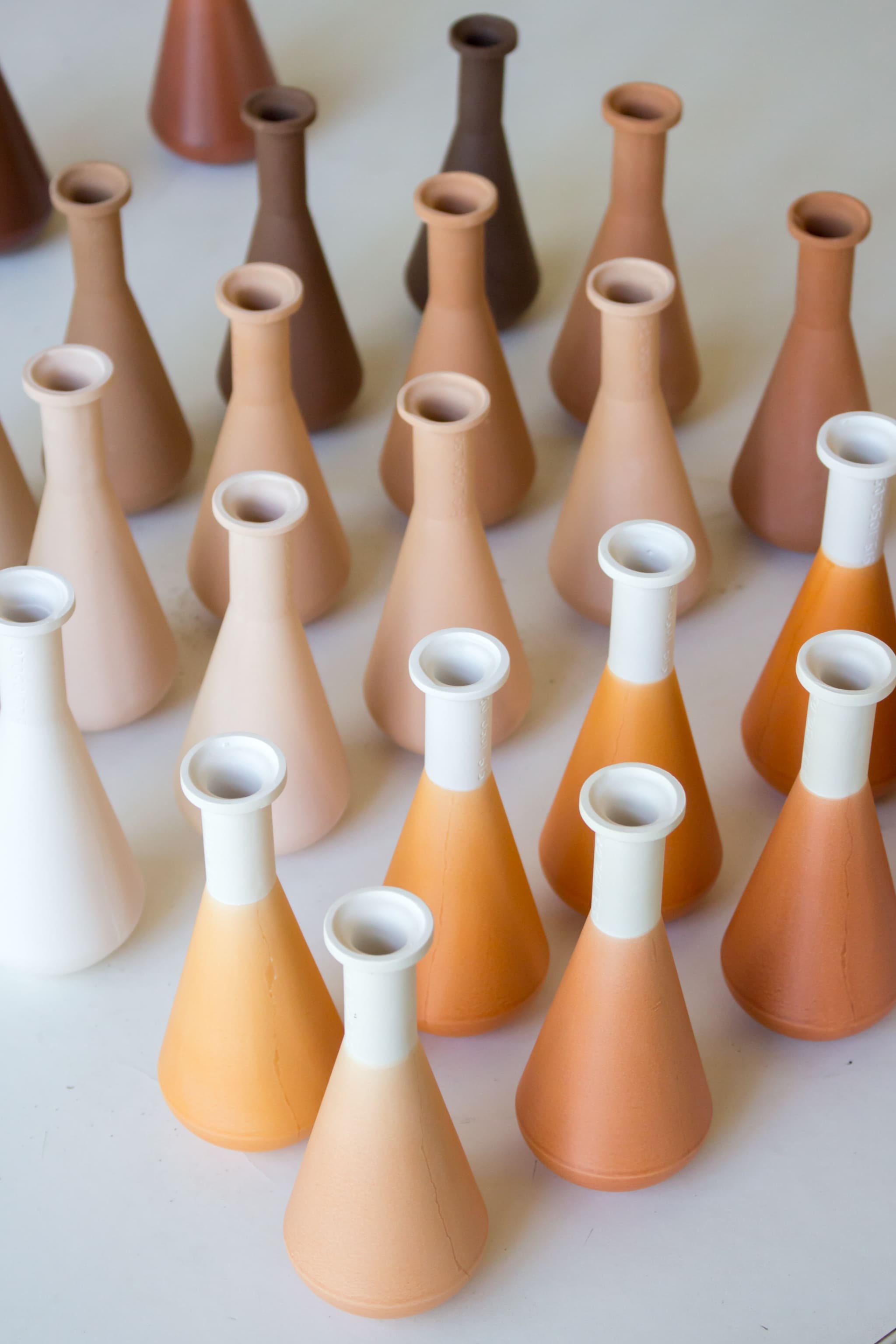
3. The water jugs in this collection feature a terra sigillata coating. Could you explain how this material is applied and what its functional and aesthetic benefits are in this context?
Terra sigillata is made by letting clay particles settle in water, then collecting only the finest top layer. This slip is applied in thin layers—brushed or poured—before the final firing.
We extracted terra sigillata directly from Nijmegen clay, connecting our research to the local soil and the Roman ceramic traditions. You can see examples of these objects at the local city museum.
Functionally, it produces a smoother, less porous surface, though it’s not a full waterproof solution like glaze. We appreciated the natural, satin finish, and applied it only to the jug exteriors as a subtle nod to Nijmegen’s past.
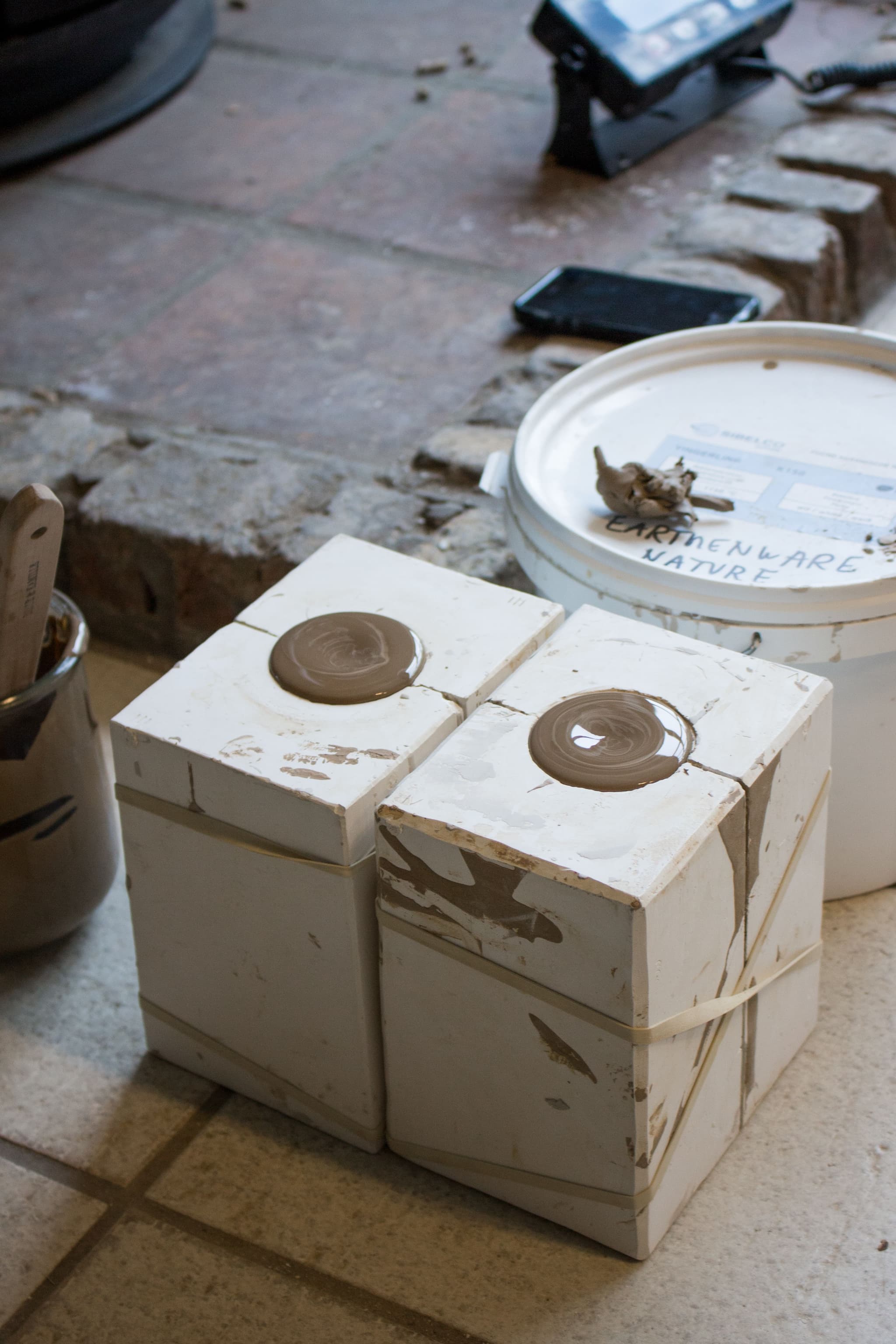
4. Your project brings a historical influence to the forefront with modern designs. How did you incorporate past ceramic styles into the contemporary shape and form of the jugs, and how does this connection to the past enhance their significance?
We started by visiting the Valkhof Museum and local archives to explore original Roman vessel forms. Fabrikaat also supported us with historical documents.
The colour palette and use of terra sigillata already referenced Roman traditions. In terms of form, we retained small details like the handle, inspired by ancient vases, but modernised the rest: sharper lines, refined rims, and proportions not found in Roman times.
This creates a dialogue between past and present—inviting viewers to ask where these objects come from and how heritage continues to influence contemporary design. The jug function itself ties back to our residency along the Waal river.
5. In terms of sustainability, your work emphasizes the use of local materials. How do you assess the environmental impact of sourcing and working with local clay in comparison to other material options?
We didn’t compare other materials—our focus was entirely on local clays. The aim was to highlight the value of the soil, especially as the area near the Waal was about to be built over.
Using local materials naturally reduces transport emissions—the clay we used was just 100 meters from the residency!
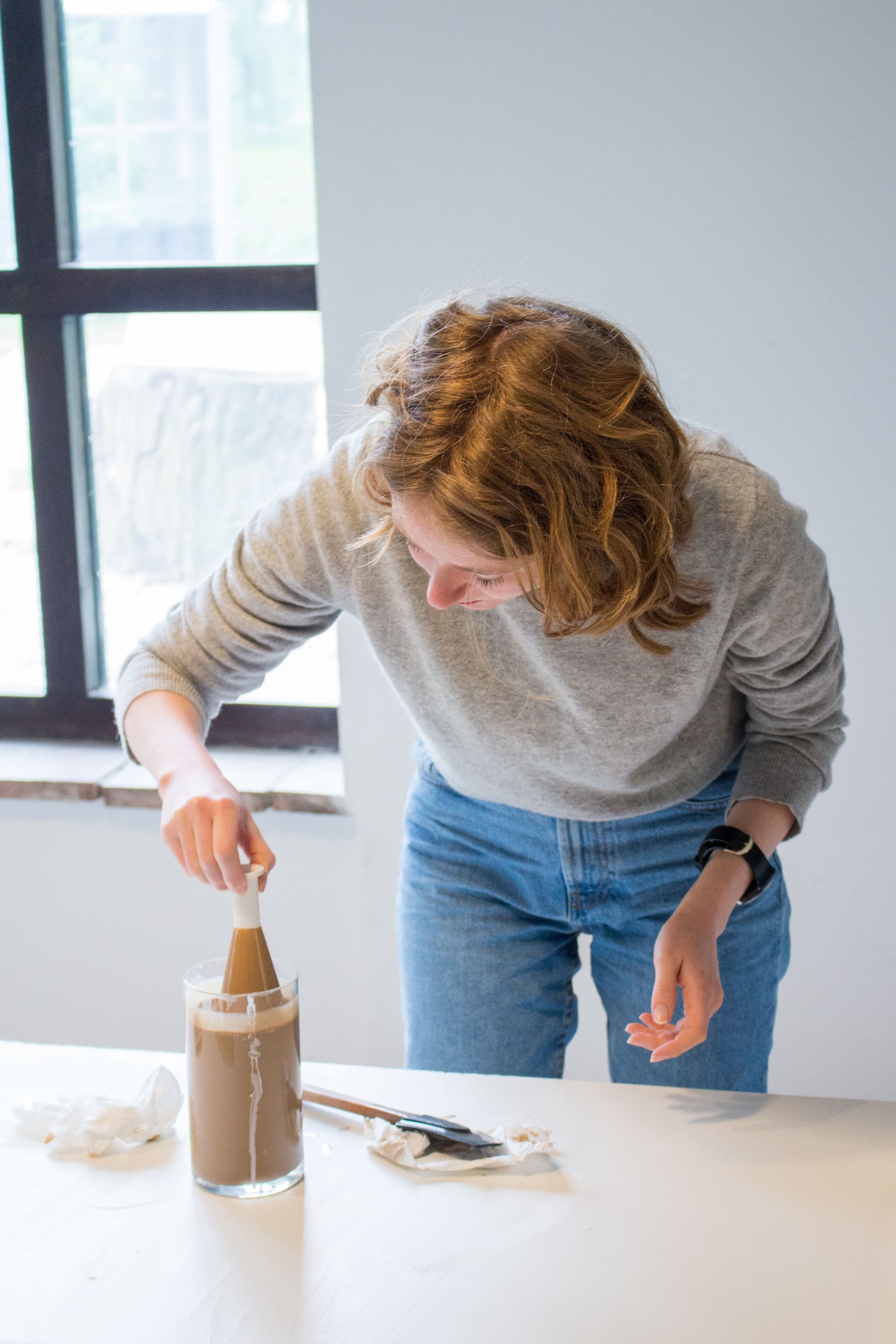
6. As a designer focused on sustainability, how do you envision the future of ceramics in creating sustainable household objects, especially with respect to material sourcing and manufacturing processes?
We integrate sustainability from the design phase, sourcing from local or regional suppliers (like France) and working in our studios in Eindhoven and Nantes.
Firing is the most energy-intensive part. We maximise kiln efficiency and minimise waste—our goal is zero trash. Imperfect but functional pieces are sold as B-choices at lower prices.
True sustainability also lies in longevity. We design unique, deeply cared-for pieces that people want to keep for life. Even our packaging is plastic-free—just paper and cardboard.

7. The jugs are created using a mix of slip clay and white earthenware. Could you explain why you chose this particular mix and how it impacts the quality, durability, and overall design of the final products?
Nijmegen clay alone was unstable, especially difficult to demould. Mixing in white earthenware improved workability and made mould removal easier.
These blends were tested from the beginning, and chosen based on how they reacted to our firing temperatures. This gave us freedom in shaping the jugs while maintaining consistency in colour and structure.
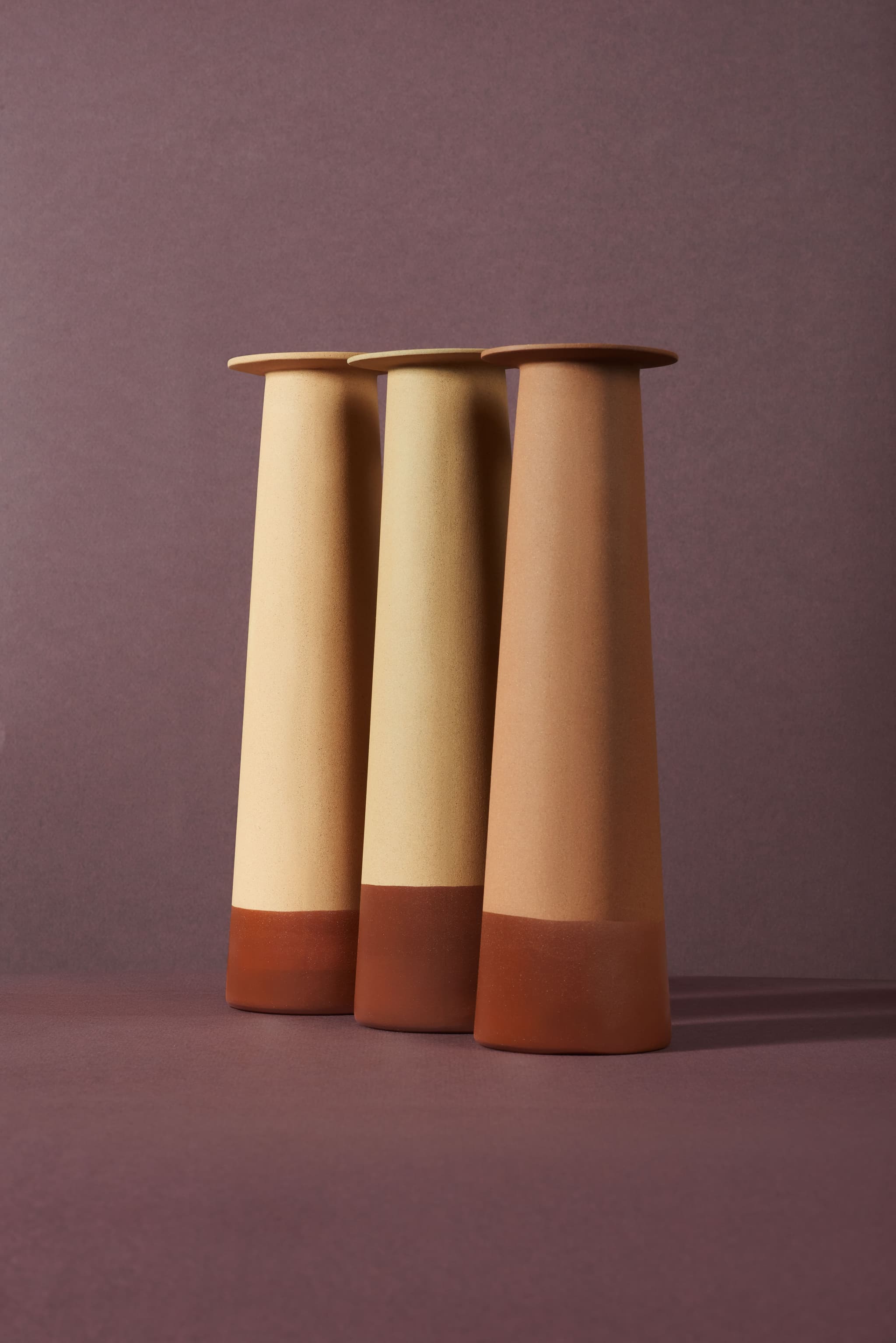
8. The ‘TERRA-Tory’ series is based on your residency research. What specific insights or discoveries from your research directly influenced the final design of the water jugs, and how did this process shape your material choices?
The TERRA-tory series visually showcases our material research—differences in colour, shrinkage, and functionality between clay blends.
We discovered that while terra sigillata had aesthetic value, it wasn’t enough to ensure water-tightness on its own. We avoided glaze when possible but had to prioritise practicality too.
Through these trials, we selected viable samples and refined our choices: even small temperature changes in one mix could alter the outcome. Each jug in the final series embodies this research.
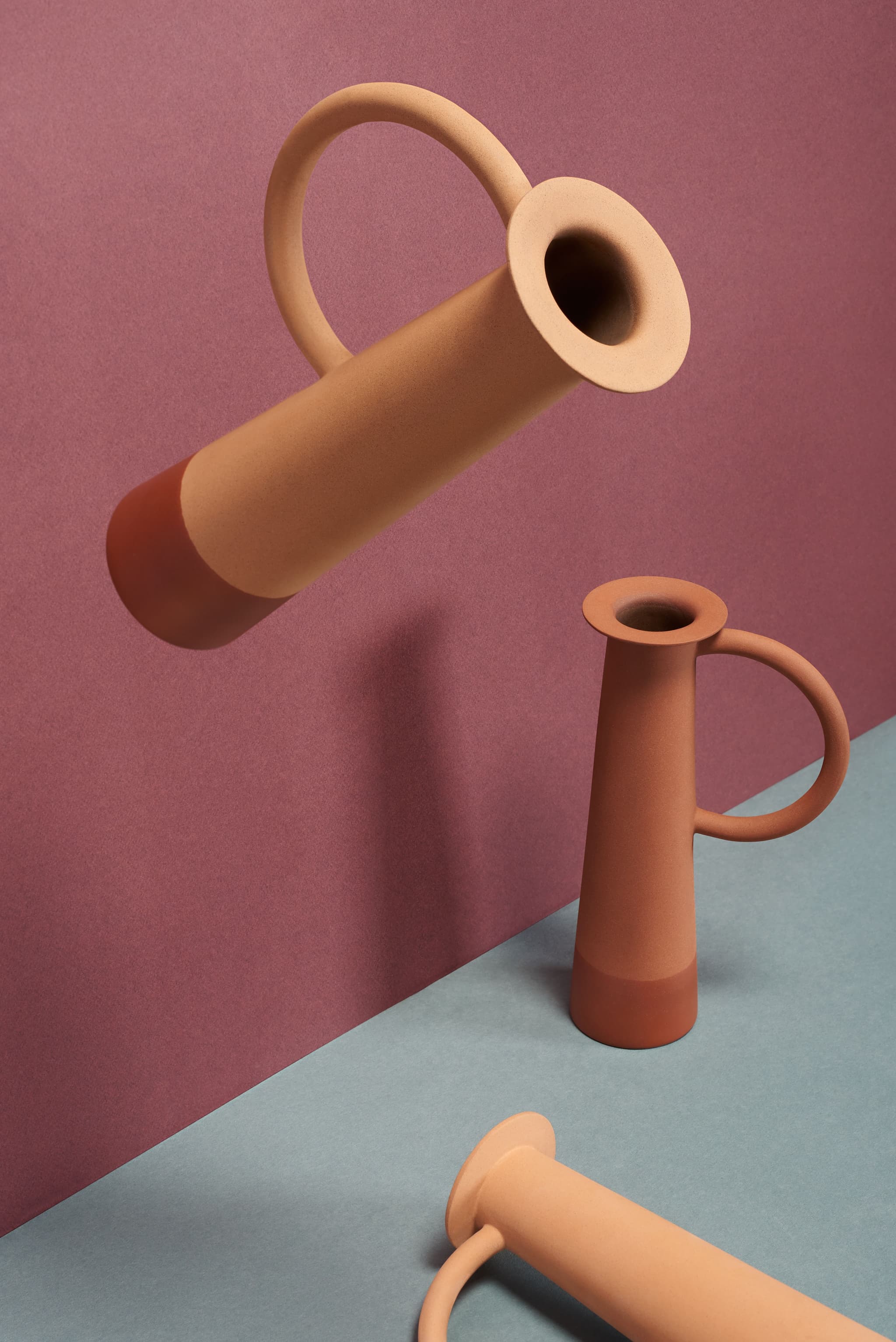
9. Given that the jugs are crafted using a specific local clay, what role do you see local, regenerative material sourcing playing in the future of sustainable product design? How does it contribute to both the design’s integrity and its environmental impact?
Regenerative sourcing is complex with clay—it's not quickly renewable. But ceramics can last for centuries, which gives them great long-term value.
We adapt based on local availability, prices, and ecosystems. Our aim is to show that alternative paths—even if not perfect—can inspire new approaches to material usage.
Sustainability isn’t just about scaling—it’s about doing slightly better each time. We believe in a diverse, adaptive path forward for design.








